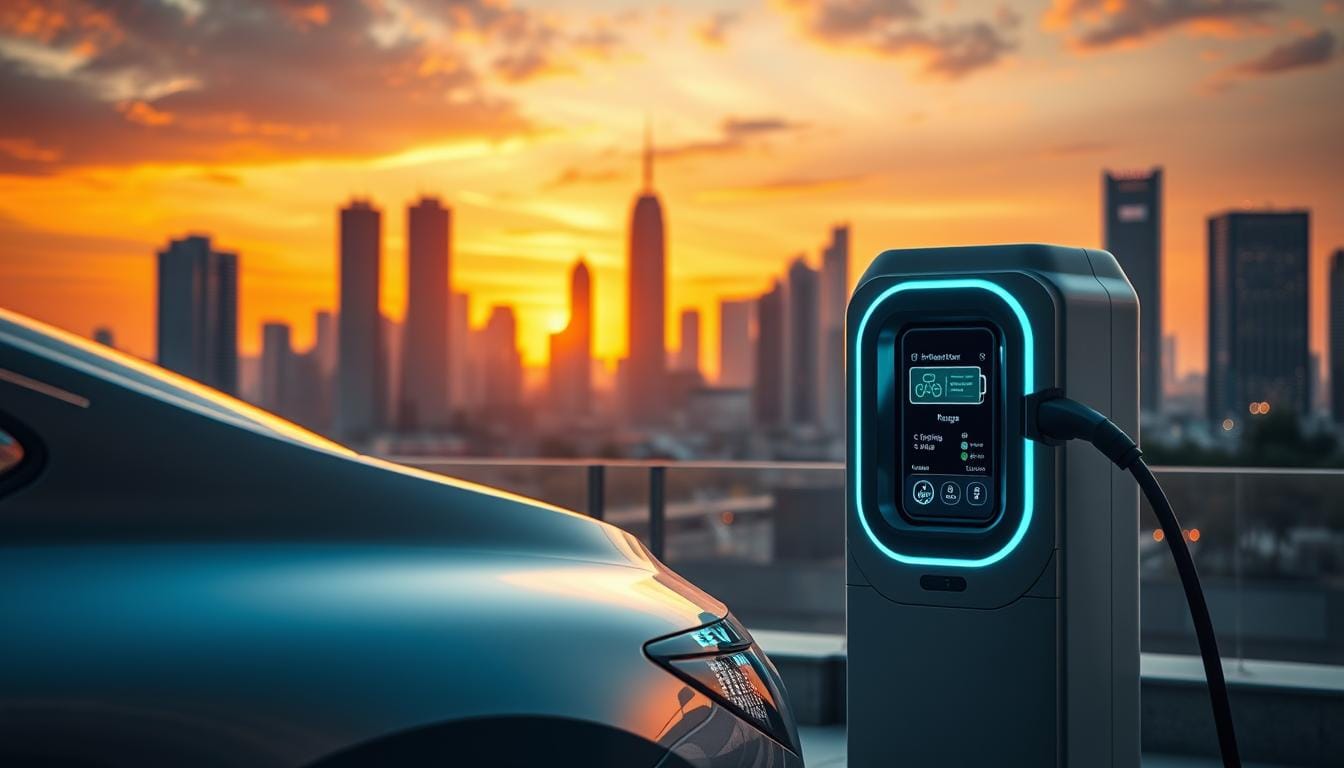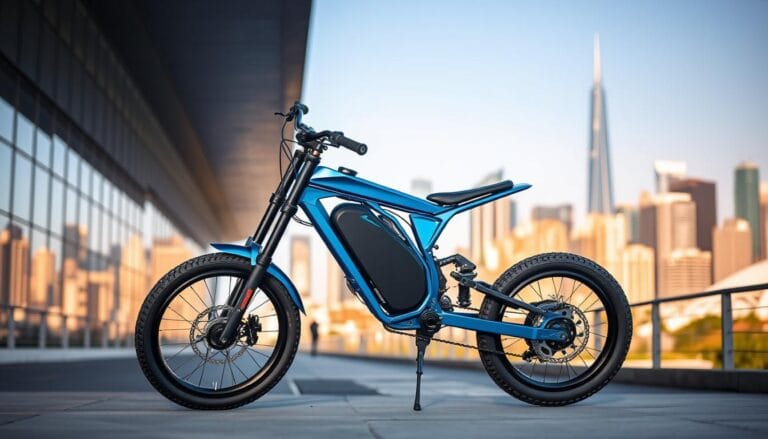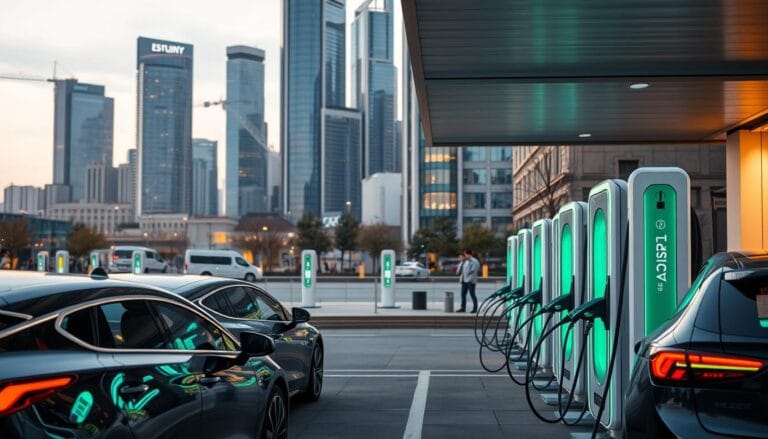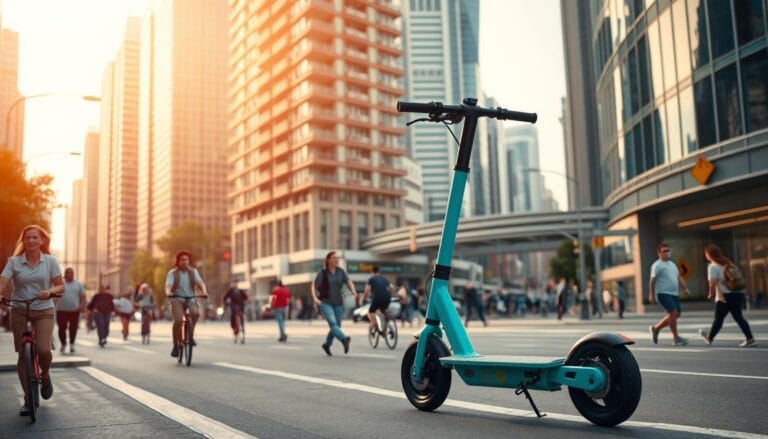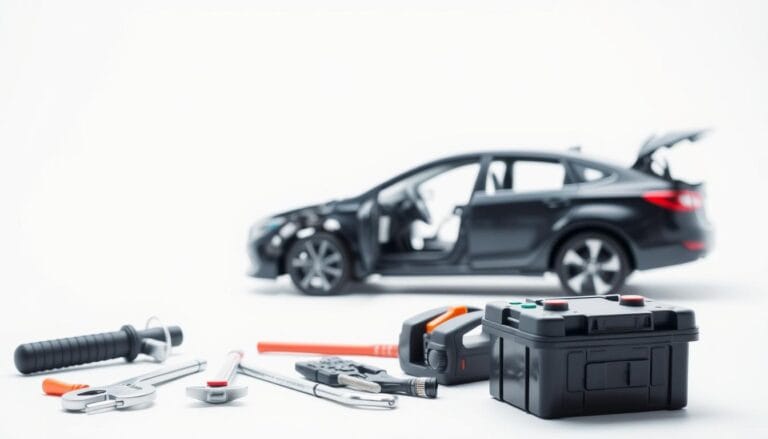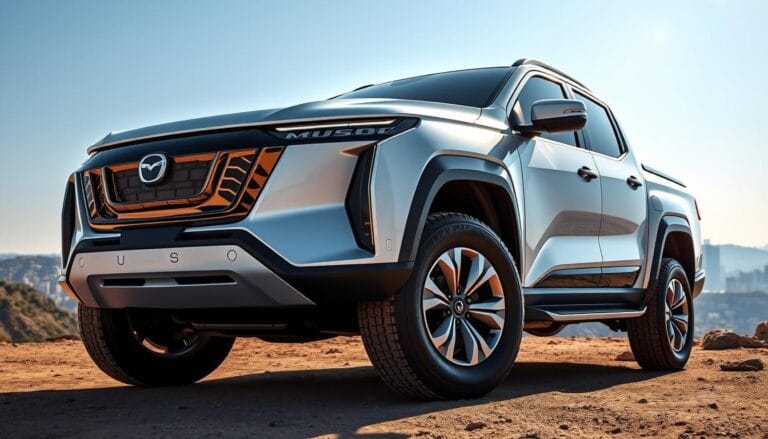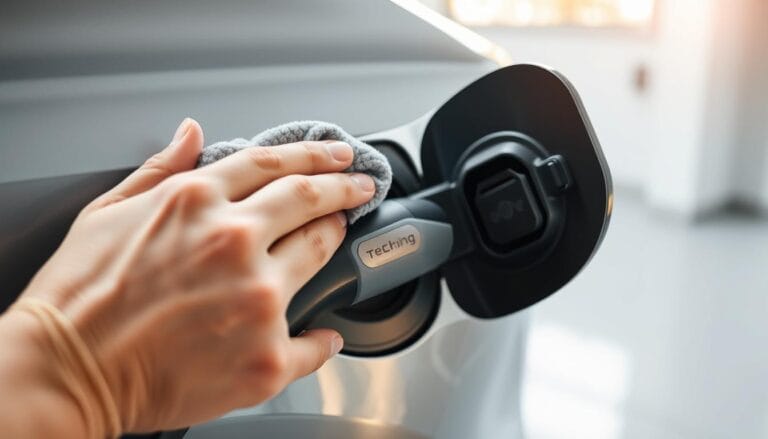EV Range Optimization: Maintenance Tricks for More Miles
As an electric vehicle owner, I remember the first time I felt the anxiety of watching my battery percentage drop during a long drive. The fear of being stranded was real. But through years of experience, I’ve discovered that EV range optimization isn’t just a technical challenge—it’s an art of understanding your vehicle’s unique capabilities.
Electric vehicles typically offer over 200 miles of range. But to maximize that, you need to drive efficiently. Your EV is more than just a car—it’s a sophisticated machine that responds to your driving habits, maintenance, and environmental conditions.
EV range optimization goes beyond just plugging in your car. It’s about understanding how every decision impacts your vehicle’s performance and efficiency. From tire pressure to driving techniques, small adjustments can significantly extend your electric vehicle’s range.
Table of Contents
Understanding EV Range Optimization
Electric vehicle owners are learning how key range optimization is. It helps you go further on a single charge. This is all about managing your battery and driving smart.
Driving an electric vehicle comes with its own set of challenges and benefits. How well you manage your battery affects your range and energy use.
What is EV Range Optimization?
Range optimization is about making your electric vehicle more efficient. It includes:
- Maintaining optimal tire pressure to reduce rolling resistance
- Practicing smooth acceleration and braking
- Utilizing regenerative braking technology
- Planning routes that minimize energy consumption
Why it Matters for Electric Vehicle Owners
Learning about range optimization can save you money and boost your confidence in electric vehicles. Here are some important points:
- Proper battery management can extend your vehicle’s range by up to 25%
- Maintaining battery charge between 20% and 80% promotes long-term battery health
- Efficient driving techniques can significantly reduce energy consumption
Your choices in charging infrastructure and battery management are key to better electric vehicle performance. Smart optimization strategies can change your driving experience and make every kilowatt-hour count.
Factors Affecting Your EV Range
Electric vehicle range is influenced by many factors. Knowing these can help you get the most out of your EV. Battery health and driving style are just a few things that affect how far you can go on one charge.
Your EV’s range depends on several important parts that work together while you drive. Keeping the battery at the right temperature is key to its performance.
Battery Health and Capacity
The state of your EV’s battery is very important for its range. Keeping the battery healthy is essential for it to last long. Here are some tips:
- Keep the battery charge between 20% and 80%
- Avoid extreme temperatures
- Check the battery regularly
Driving Habits and Driver Behavior Analysis
How you drive affects how much energy your EV uses. Analyzing your driving habits shows that:
- Smooth acceleration saves energy
- Driving at a steady speed is best
- Using regenerative braking helps
Weather Conditions Impact
Weather can greatly affect how well your EV performs. Cold and hot weather can make the battery less efficient.
| Temperature Range | Battery Performance Impact |
|---|---|
| Below 20°C | Significant range reduction |
| Above 30°C | Increased battery stress |
| Optimal Range (20-25°C) | Maximum efficiency |
Understanding these factors can help you improve your EV’s range and performance. This is true for different driving conditions.
Regular Maintenance Tips for Optimizing Range
Keeping your electric vehicle in good shape is key to getting the most out of it. Taking care of your car can make your battery last longer and your car run better. Small steps can lead to big improvements in your electric vehicle’s performance.
There are a few important areas to focus on for your electric vehicle:
- Tire maintenance and inflation
- Battery health monitoring
- Regular system checks
- Efficient driving practices
Keeping Your Tires Properly Inflated
Tire care is vital for your electric vehicle’s range. If your tires are underinflated, it can make your car use more energy. This can cut down your range by up to 10%. It’s important to check your tire pressure often.
| Tire Condition | Impact on Range | Recommended Action |
|---|---|---|
| Underinflated | Up to 10% range reduction | Check and inflate monthly |
| Properly Inflated | Maximum efficiency | Use recommended PSI |
| EV-Specific Tires | Low rolling resistance | Consider specialized EV tires |
Routine Battery Checks and Care
Looking after your battery is essential for your electric vehicle’s long-term health. Experts say to keep your battery between 20% and 80% charged. This can help your battery last up to 30% longer. Try to avoid letting your battery get too low or charging it too high.
Here are some tips for battery care:
- Precondition your battery in extreme temperatures
- Avoid charging to 100% regularly
- Monitor battery health through your vehicle’s display
- Use eco-mode to improve efficiency
Efficient Charging Practices
Getting the most out of your electric vehicle starts with smart charging. Knowing how to use charging infrastructure is key. It helps you drive more efficiently and keeps your EV’s battery healthy for longer.
Electric vehicle owners can boost their charging game by following some simple rules. These rules protect your battery and help you go further on a single charge.
Best Times to Charge Your EV
When you charge your EV matters a lot. It affects both your wallet and your battery’s life. Here are some smart ways to charge:
- Charge when electricity is cheaper, like off-peak hours
- Keep your battery between 20% and 80% for best performance
- Avoid fast charging too often to avoid battery stress
Utilizing Smart Charging Solutions
Today’s charging tech offers cool features to make charging better. With advanced systems, you can:
- Keep an eye on your battery’s health in real-time
- Plan your charging for the best times
- Use smart algorithms to charge wisely and protect your battery
Pro tip: Preconditioning your battery before charging can improve overall efficiency, even in extreme weather.
Charging smartly isn’t just about plugging in—it’s about understanding your vehicle’s unique energy needs.
Enhancing Aerodynamics for More Miles
Getting the most out of your electric vehicle’s range is not just about the battery. Aerodynamic design is key to how well your EV moves on the road. By understanding and improving your vehicle’s aerodynamics, you can drive further.
Today’s electric vehicles use advanced aerodynamics to save energy. The drag coefficient (DC) is a big deal for EV makers. Cars like the Mercedes EQS and Lucid Air have very low drag coefficients, which means they go further and use less energy.
The Science Behind Vehicle Aerodynamics
At high speeds, air resistance is a big energy eater. Studies show that at 78 mph, about 80 percent of an EV’s power goes to fighting air resistance. This is why using lightweight materials and designing for less drag is so important for better efficiency.
- Remove unnecessary external accessories like roof racks
- Minimize vehicle weight by removing excess cargo
- Maintain optimal tire pressure
- Choose smooth, streamlined routes when possible
Practical Modifications for Range Improvement
Small tweaks can make a big difference. A 10-percent better aerodynamic performance can increase range by 5-8 percent. Here are some practical changes to consider:
- Wheel covers to reduce turbulence around wheel wells
- Smooth underbody panels to minimize air resistance
- Aerodynamic wheel designs that reduce drag
By focusing on aerodynamic efficiency, you can make your electric vehicle perform better and go further. Smart, strategic changes can make a big impact.
Maximize Efficiency with Driving Techniques
Learning to drive efficiently is key for electric vehicle owners. It helps you go further on a single charge. Knowing how to drive well lets you get the most out of your electric car.

Smart drivers use regenerative braking to their advantage. This tech turns braking into energy to charge your battery. It’s a big deal for electric cars.
Smooth Acceleration and Braking Strategies
- Accelerate gradually and consistently
- Anticipate traffic flow to minimize sudden stops
- Maintain a steady speed when possible
- Use cruise control on highways
Maximize Regenerative Braking Performance
Regenerative braking saves energy that would be lost when braking. Knowing how your car’s system works can make a big difference. It boosts your driving efficiency.
| Driving Technique | Energy Efficiency Impact |
|---|---|
| Smooth Acceleration | Reduces energy consumption by up to 20% |
| Regenerative Braking | Recovers 10-15% of kinetic energy |
| Consistent Speed | Minimizes unnecessary energy expenditure |
Your driving style affects your electric car’s range. Practice smooth, predictable movements to maximize energy efficiency. Using these tips will not only make your car last longer but also save you money.
Understanding EV Features that Aid Range
Modern electric vehicles have smart software and dashboard tools to help you get the most out of your drive. These systems give you real-time info on how much energy you’re using. This helps you make better choices about how you drive.
Your EV’s dashboard is a key tool for improving your driving range. It shows you how to use less energy and go further.
Decoding Your EV’s Dashboard
EV dashboards give you important info to boost your driving range:
- Real-time energy use metrics
- Battery temperature indicators
- Efficiency tracking displays
- Predicted range calculations
Utilizing Range Prediction Tools
Range prediction tools use advanced tech to guess how far you can go. They look at:
- Current battery charge level
- Driving style
- Terrain and route characteristics
- Climate control usage
| Feature | Impact on Range |
|---|---|
| Battery Temperature | Optimal between 68-86°F |
| Regenerative Braking | Can extend range by 10-15% |
| Driving Speed | Most efficient under 50 mph |
“Knowledge is power, when it comes to your electric vehicle’s range.”
By using these dashboard tools, you can greatly improve your EV’s range and driving efficiency.
Seasonal Considerations for Your EV
Electric vehicles perform differently in each season. Knowing how temperature affects your EV’s range and efficiency is key. This knowledge helps with better thermal management and energy-saving driving.

Extreme temperatures greatly impact your electric vehicle’s performance. Studies show that EV range changes a lot between winter and summer.
Preparing for Winter Driving Conditions
Winter brings special challenges for EV owners. Cold weather can cut your EV’s range by up to 40%. It’s important to prepare wisely.
- Precondition your vehicle while plugged in to minimize battery strain
- Use heated seats instead of cabin heating to conserve energy
- Maintain optimal tire pressure for improved efficiency
- Choose winter tires designed for EV performance
Summer Heat and Its Impact on Range
Summer heat also affects your EV’s performance. Research shows that using air conditioning can reduce range by up to 17%.
| Temperature Range | Range Impact | Energy-Efficient Strategies |
|---|---|---|
| Below 32°F | Up to 40% reduction | Precondition battery, use heated seats |
| Above 95°F | Up to 17% reduction | Minimize AC use, park in shade |
By understanding these seasonal changes, you can make your EV perform better all year. Smart thermal management and energy-saving driving are the keys.
Upgrading Your EV for Better Performance
Electric vehicle owners can make their cars better by upgrading. Improving battery management and using lightweight materials are key. These steps can boost your EV’s performance.
New tech offers ways to make your electric vehicle better. Modern EVs have upgrade options. These can increase your driving range and improve how your car performs.
Battery Upgrade Strategies
Upgrading your EV’s battery can make a big difference. Here are some strategies to consider:
- Evaluate battery capacity enhancements
- Explore lightweight battery replacement options
- Consult manufacturer-approved upgrade paths
Software Updates for Range Improvement
Manufacturers often release updates to make your EV more efficient. These updates can include:
- Improved battery management algorithms
- Enhanced regenerative braking efficiency
- More accurate range prediction tools
“Continuous software improvements can help you squeeze extra miles from your electric vehicle.” – EV Performance Experts
| Upgrade Type | Potential Range Improvement | Cost Estimation |
|---|---|---|
| Battery Capacity Upgrade | 10-20% | $3,000-$7,000 |
| Software Optimization | 5-15% | Often Free |
| Lightweight Material Retrofit | 3-8% | $1,500-$4,000 |
Keep your EV in top shape by following manufacturer advice. Also, talk to certified electric vehicle technicians for personalized upgrade tips.
The Future of EV Range Enhancement
The electric vehicle world is changing fast. By 2030, 26.4 million EVs will hit U.S. roads. Your journey to improve EV range is about to get more thrilling with new tech and policy changes.
Charging stations are getting a big boost. The Bipartisan Infrastructure Law will add $7.5 billion for 500,000 new chargers. This will ease range worries for EV owners, even in states like Mississippi and West Virginia.
Battery tech is advancing EVs’ performance. Today’s EVs can go over 200 miles, and some luxury models go beyond 300 miles. As research keeps going, you’ll see even better ranges, making EVs great for long trips and daily driving.
Policy changes and new tech are making EVs more appealing. With better range and more charging spots, electric cars are becoming a top choice for many Americans.

